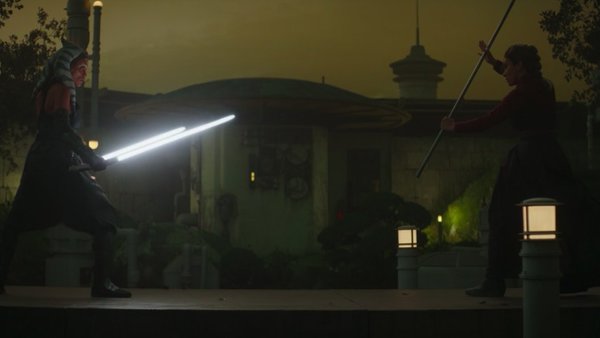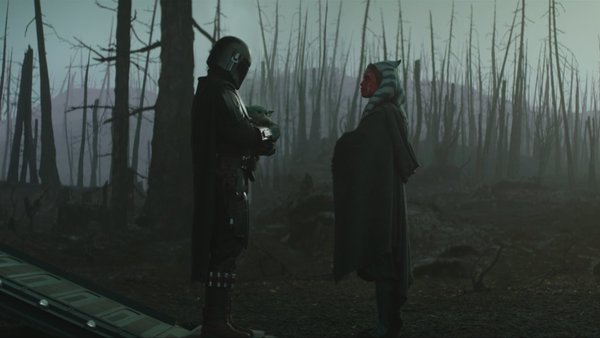The Mandalorian 2.5 Review - 7 Ups And 0 Downs From Chapter 13
3. Dave Filoni Returns

Seeing Dave Filoni effortlessly transition from animation to the live action realm has been great to see over the last year. His contributions to last season's Mandalorian were commendable, but he's taken his expert understanding of the galaxy far, far away to a whole other level this time around.
Returning to both the writer's room and the director's chair for this instalment, Filoni turns in the strongest episode of The Mandalorian to date. The set-up, the action, the story itself - it's all remarkably well handled, but it's the way in which Filoni addresses Star Wars' filmic origins that takes this episode up a whole other level.
I won't be the first tell you that George Lucas' space opera owes a lot to samurai cinema and the Western genre. 1977's Star Wars was largely inspired by Akira Kurosawa's The Hidden Fortress, while John Ford's The Searchers also had a notable influence on Lucas' work. Both genres have of course fed off each other and influenced the other equally, but it's Star Wars' blending of the two that has largely made its mythos so compelling.

Now The Mandalorian, for the most part, has shirked Star Wars' samurai roots. It has instead lent further into Western territory, and that makes sense given Din Djarin is a Man With No Name-style gunslinger bounty hunting across the galaxy. While the series may take inspiration from samurai works like Lone Wolf & Cub or - for at least one episode - Seven Samurai, it's still firmly rooted in Western archetypes.
Chapter 13, though, sees a return to the seamless blend that has defined Star Wars on the big screen. Corvus itself bears the echo of a late 18th century Japanese setting, and the duel between Ahsoka and the Magistrate is framed deliberately to harken back to samurai duels like those seen in the aforementioned films.
Ahsoka's arrival - and indeed her alliance with Din Djarin - takes the franchise back to its roots; a moment best exemplified as Tano duels the Magistrate, while Din engages in a standoff with Biehn's character outside.